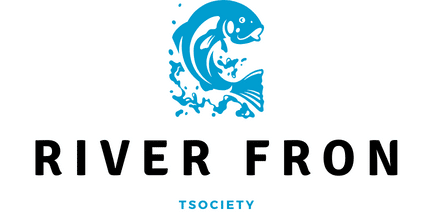Can Phage Therapy Provide New Solutions for Antibiotic-resistant Bacteria?

The rise of antibiotic-resistant bacteria has become a major public health concern in recent times. The Pseudomonas aeruginosa, for instance, has developed alarming levels of resistance to conventional antibiotic treatment. As such, research has pivoted towards innovative solutions leveraging the science of bacteriophages, or simply phages, to combat these superbugs. This article explores the potential promise that phage therapy holds for tackling antibiotic-resistant bacteria and examines the wealth of resources available, from databases like PubMed, Crossref, and Google Scholar, to the unique identifier like DOI and articles available on PMC.
The Science of Phages
Within the realm of microbiology, phages are viruses that specifically target bacterial hosts. They offer a unique tool in combating bacterial infections due to their host-specific action. As a bacteriophage attaches itself to a bacterium, it injects its genetic material into the host cell. This genetic material then hijacks the cell’s machinery to replicate the phage. Once the replication is complete, the new phages break out of the host cell, destroying it in the process.
Additional reading : Travel-inspired temporary tattoos: transform your journey into art
It’s this precision-guided, bacteria-eliminating property of phages that has thrust them into the spotlight for therapy against antibiotic-resistant bacteria. Moreover, phages are ubiquitous in nature, offering a potentially inexhaustible source for therapy. They also have remarkable adaptability and can evolve to overcome bacterial resistance, making them a sustainable solution to the antibiotic-resistance problem.
Phage Therapy in Action
Phage therapy involves the targeted application of phages to treat bacterial infections. Unlike antibiotics, phages are not broad-spectrum and do not harm beneficial bacteria, focusing instead only on the harmful ones. This specificity can be a boon when treating infections caused by antibiotic-resistant strains like P. aeruginosa.
Also to discover : How to Design a User-Friendly Interface for Mobile Banking Apps?
Phages can also penetrate biofilms – a protective layer formed by bacteria that antibiotics often fail to penetrate. Additionally, phages have the capability to self-amplify at the site of infection, which could potentially reduce the dosage and frequency of treatment.
Challenges and Potential Solutions
Despite the promise, phage therapy is not without challenges. One of the key issues is the rapid clearance of phages by the immune system of the body. This can limit the effectiveness of the therapy. However, researchers have proposed solutions like encapsulating phages in liposomes or other biocompatible materials to overcome this hurdle.
The specificity of phages can also be a double-edged sword. A phage effective against one strain of bacteria may not work against another. This necessitates the development of personalized phage cocktails, which can be both time-consuming and costly.
The Role of Research and Resources
Across platforms like PubMed, Crossref, and Google Scholar, an increasing number of studies are exploring the potential of phage therapy. They offer a wealth of peer-reviewed articles, each with a unique DOI for easy referencing. Resources like PMC provide access to full-text articles that delve into the intricate details of phage therapy.
Through these databases, one can find numerous studies detailing the successful application of phage therapy to treat antibiotic-resistant bacterial infections in both in vitro and in vivo settings. These studies highlight the potential of phage therapy and pave the way for its widespread adoption in clinical settings.
Regulatory Landscape and Future Prospects
The regulatory landscape for phage therapy is still shaping up. In the US, the Food and Drug Administration (FDA) has approved the use of phages in food safety but has yet to give full approval for their use in clinical therapy. However, given the urgency of the antibiotic-resistance crisis, it’s likely that regulatory agencies will take a more proactive approach to evaluating and approving phage therapy.
As we continue to grapple with the problem of antibiotic-resistant bacteria, phage therapy emerges as a potentially potent weapon. Its unique characteristics and the growing body of research supporting its effectiveness make it a promising contender in the battle against superbugs. As we move forward, it will be crucial to continue leveraging resources like PubMed, Crossref, Google Scholar, DOI, and PMC to further our understanding and application of this potential game-changer in the field of medicine.
Incorporating Phage Therapy into Mainstream Medicine
The prospect of integrating phage therapy into mainstream medical practice is a thrilling endeavor. The unique capabilities of bacteriophages, such as their host-specific action, adaptability, and ability to penetrate biofilms, offer a potentially robust solution to antibiotic resistance. However, it is essential to address the challenges associated with phage therapy, such as the immune system’s rapid clearance of phages and the need for developing personalized phage cocktails.
In dealing with the immune system’s clearance of phages, the utilization of liposomes or other biocompatible materials for encapsulation proves to be a promising solution. Moreover, advancements in genomic technologies can expedite the process of creating personalized phage cocktails, thereby reducing costs and saving time.
The extensive database resources available, ranging from Google Scholar to PubMed, Crossref, and PMC, offer a wealth of information for medical professionals and researchers exploring phage therapy. Each article PubMed presents comes with a unique DOI PubMed, enabling easy referencing. Furthermore, PMC free articles provide full text, offering in-depth insights into the intricacies of phage therapy.
Conclusion: Embracing the Potential of Phage Therapy
In conclusion, the rise of antibiotic-resistant bacteria is a pressing public health concern that calls for innovative solutions. Phage therapy presents a promising answer to this problem. Its unique properties, such as host-specific action and adaptability, make it a robust weapon in the fight against superbugs.
Despite the challenges associated with phage therapy, solutions are being proposed and explored. These include encapsulating phages in biocompatible materials and leveraging genomic technologies to create personalized phage cocktails.
The wealth of resources available on platforms such as PubMed, Crossref, Google Scholar, and PMC are invaluable in driving forward the research into phage therapy. These databases provide a multitude of peer-reviewed articles, each with a unique DOI, for easy referencing and increased accessibility to full-text content.
As the regulatory landscape continues to evolve, it is expected that with the mounting evidence from successful phage antibiotic treatments, regulatory bodies like the FDA will be more inclined to approve the use of phage therapy in clinical settings.
In the face of the growing antibiotic resistance crisis, it is imperative to continue leveraging these resources and driving forward research to fully understand and harness the potential of phage therapy. While it is not a panacea, phage therapy could very well be a game-changer in the field of medicine, providing a sustainable, adaptable, and effective solution to antibiotic-resistant bacterial infections.
